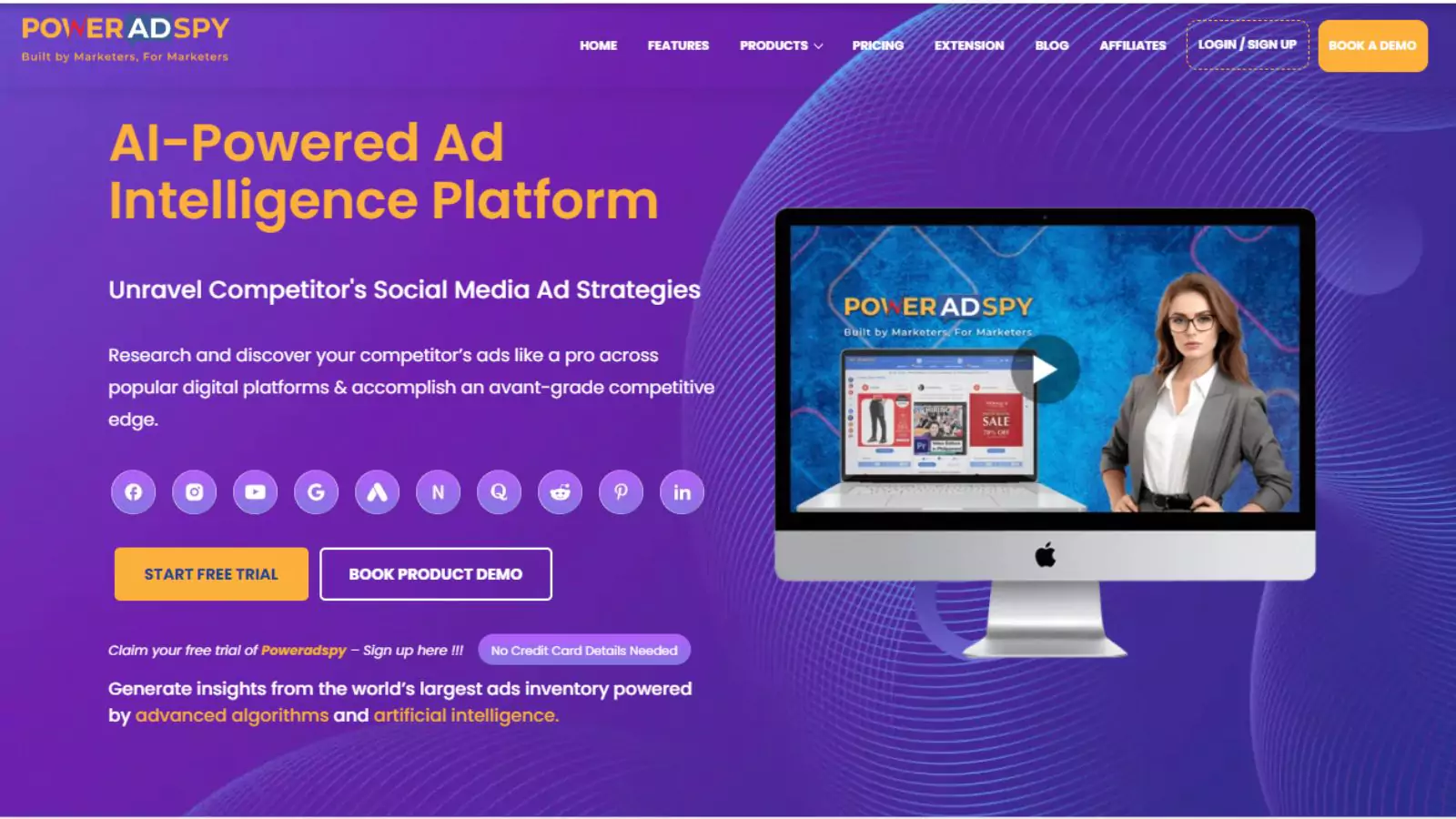Easy Ways To Improve Advertising For Ecommerce
Advertising plays a crucial role in helping businesses succeed in the digital marketplace. As online shopping grows, businesses must adapt to reach customers effectively. Advertising for ecommerce is not just about showcasing products; It is about creating meaningful connections that drive sales and build lasting customer loyalty. Using different platforms and strategies, like social media, search engine ads, and retargeting—businesses can target the right audience, craft compelling messages, and continuously optimize their campaigns for better results.
In this blog, we will explore how advertising for e-commerce works, why it is essential, and practical tips to ensure your ads are as effective as possible in today’s competitive online environment.
In a hurry? Listen to the blog instead!
What Is Advertising For Ecommerce?
Advertising products or services online through various digital channels involves crafting targeted messages designed to attract, engage, and convert potential customers in the digital space. Unlike traditional advertising, this form of marketing leverages the power of the Internet to reach a global audience quickly and cost-effectively.
Advertising is not just about pushing a product; it’s about creating an experience that resonates with your audience. By doing this, businesses can build trust and foster long-term relationships with their customers. In a nutshell, advertising for e-commerce bridges the gap between online shoppers and the brands that serve them.
Types Of Advertising For Ecommerce
Several types of advertising cater to different marketing goals. Here are some of the most effective methods:
Social Media Advertising: Platforms like Facebook, Instagram, and Pinterest offer robust tools for reaching highly targeted audiences. For example, fb ads for ecommerce allow you to target users based on their interests, behaviors, and demographics. Social media advertising is perfect for visually appealing products and can drive engagement and conversions.
Search Engine Advertising: Search engine advertising, such as Google Ads, places your brand at the top of search results when potential customers look for related products. This form of paid advertising for ecommerce is particularly effective when combined with a strong SEO strategy.
Display Advertising: Display ads appear on websites, blogs, and apps that target audience visits. They use banners, images, or videos to capture attention and drive traffic to your online store. Display advertising is a key element in comprehensive advertising for ecommerce strategy.
Retargeting Ads: Retargeting is a powerful way to re-engage visitors who have already shown interest in your products. These ecommerce ads remind potential customers of items they viewed, nudging them toward a purchase. This strategy increases conversion rates by keeping your brand top-of-mind.
Influencer Marketing: Leveraging influencers who resonate with your target audience can boost your brand’s credibility. Influencer marketing is a modern twist on advertising for ecommerce that builds trust through authentic endorsements and reviews.
How Advertising For Ecommerce Works
Advertising helps businesses promote their products, attract the right customers, and drive sales through digital marketing strategies. Here’s how it works:
Targeting the Right Audience: E-commerce ads use data-driven insights to reach potential buyers based on demographics, interests, and online behavior. Platforms like Google, Facebook, and Instagram allow advertisers to refine their audience for better results.
Choosing the Right Ad Platforms: Businesses can advertise through various channels, including:
- Search Ads (Google Ads): Show up when customers search for related products.
- Social Media Ads (Facebook, Instagram, YouTube, Pinterest): Help brands engage visually with potential buyers.
- Display Ads (Banners on websites): Increase brand visibility.
- Shopping Ads (Google Shopping, Amazon Ads): Showcase product images and prices directly in search results.
Creating Engaging Ad Content: E-commerce ads must include compelling headlines, eye-catching visuals, and clear calls to action. Videos, carousel ads, and interactive content can boost engagement and conversions.
Using Retargeting Strategies: Not every visitor buys immediately. Retargeting ads remind potential customers about products they viewed, increasing the chances of conversion.
Optimizing Ads for Better Performance: Ecommerce advertising requires continuous tracking and improvement. Businesses analyze ad performance through key metrics like click-through rates (CTR), conversion rates, and return on ad spend (ROAS). Testing different ad formats, copy, and targeting options helps maximize results.
Also Read!
Best Ecommerce Ads Strategies To Transform Your Business
Top 10 Ecommerce Advertising Strategies You Can’t Afford To Ignore
Why Is Advertising Important?
E-commerce has become a cornerstone of modern business strategy. With more consumers shopping online, businesses must adapt by adopting innovative digital methods. Advertising for e-commerce is not just an option; it’s a necessity for success.
Companies using these initiatives wisely can build brand awareness, drive traffic, and ultimately boost sales. As the online marketplace grows competitive, a robust advertising plan is essential to capture market share and outpace rivals.
The benefits of advertising for ecommerce extend far beyond immediate sales. By consistently engaging with your audience through targeted campaigns, you lay the groundwork for long-term customer relationships.
The insights you gain through these campaigns allow you to fine-tune your strategies and adapt to market trends, ensuring the brand remains top-of-mind with consumers.
Key Strategies For Advertising Your E-commerce Brand
Developing effective strategies for your e-commerce involves creativity and data-driven insight. One of the first steps is understanding your target audience. Remember that advertising for ecommerce should resonate with your potential customers by addressing their needs, preferences, and pain points.
Here are some key strategies to consider:
Audience Segmentation: Break your market into specific segments based on demographics, interests, and behavior. Tailoring your campaigns to each segment ensures that your advertising for e-commerce speaks directly to the people most likely to engage.
Omnichannel Marketing: just using multiple channels—ensure your brand experience is seamless across all platforms. From website to social media and even offline touchpoints, omnichannel marketing creates a unified brand presence that keeps your audience engaged throughout their journey.
Content Marketing: Create relevant content that resonates with your target audience. Effective content marketing educates and informs but also builds trust and encourages conversions. High-quality blog posts, videos, and infographics can enhance your advertising strategy.
Multi-Channel Approach: Use a mix of digital channels—social media, search engines, email marketing, and more. A diversified approach ensures that your advertising for ecommerce captures consumers wherever they spend their time online.
Content Quality: Invest in high-quality visuals and engaging copy. When your content stands out, your advertising becomes more memorable and effective.
These strategies create a flexible framework that can adapt to changing market conditions, ensuring that your advertising for ecommerce remains innovative and impactful.
Practical Tips For Your E-commerce.
Effective advertising for ecommerce requires continuous testing, learning, and adaptation. Here are some practical tips you can start applying today:
Test and Iterate: Regular A/B testing helps you understand which messages and visuals work best. This ongoing process is key to refining your advertisement.
Monitor Industry Trends: Stay current with digital marketing trends. Whether it’s emerging social platforms or new ad formats, keeping your finger on the pulse ensures your advertising remains fresh and relevant.
Budget Smartly: Allocate your budget based on performance data. When you track metrics like ROI and conversion rates, you can invest more wisely in your advertising campaigns.
Small adjustments can lead to significant improvements, so always be on the lookout for ways to optimize your efforts in advertising for ecommerce.
Use Facebook Ads For Ecommerce Success
Social media has become a vital arena for digital marketing, and Facebook ads for e-commerce are a perfect example of this trend. Facebook’s advanced targeting options allow you to zero in on your ideal audience, ensuring that your message reaches the right people at the right time.
In addition to organic reach, Facebook ads for e-commerce can drive impressive engagement and conversions when integrated into a broader strategy.
With creative storytelling and high-quality visuals, your campaigns can stand out and build real connections with your audience. This integration of platforms creates a smooth experience for consumers, making your advertising for e-commerce more effective.
To improve your Facebook ads strategy, tools like PowerAdSpy can give you insights into your competitors’ ads, helping you stay ahead. PowerAdSpy is a tool that lets you track and analyze ads from competitors on Facebook and Instagram. It improves your ads by showing what’s working for others.
Integrating Advertising For Ecommerce Into Your Marketing Mix
A holistic marketing strategy integrates every channel into one unified plan. Advertising should never operate in isolation; it must complement your overall branding and messaging efforts. When you invest in paid advertising for ecommerce, aligning your digital efforts with your broader marketing strategy is key.
Consider these tips:
Unified Messaging: Ensure the brand’s voice remains consistent across all channels. Whether it’s a tweet, an email, or a banner ad, your advertising for ecommerce should reinforce your core message.
Cross-Platform Tracking: Use analytics tools to monitor performance across various channels. This comprehensive view helps you see which parts of your advertising strategy are truly driving engagement.
Data-Driven Adjustments: Regularly review performance data to fine-tune your campaigns. Smart, informed tweaks to your advertising for ecommerce can boost your ROI over time.
Integrating this into your marketing mix creates a cohesive strategy that ensures every aspect of your digital presence works together to achieve your business goals.
The Role Of Ads Spy Tools In Advertising
Keeping an eye on your competitors is vital in the market. Utilizing an ads spy tool can give you a significant edge in ecommerce advertising strategies and advertising for ecommerce. By monitoring campaigns, you can glean insights into what strategies resonate with your shared target audience.
These tools help you identify trends, refine your creative approach, and learn from the successes and mistakes of others. With an ads spy tool in your arsenal, you can continually improve your campaigns and ensure that you are innovative and competitive.
PowerAdspy: Your Essential Tool For Better Advertising Research
PowerAdSpy is a competitive intelligence tool that helps marketers analyze competitors’ digital ads across platforms like Facebook, Instagram, and Google. It provides access to a vast database of active and historical ads, allowing users to search, filter, and study ad creatives, messaging, engagement metrics, and estimated ad spending.
Key Features:
Filter By Ad Positions: PowerAdSpy lets you filter ads based on where they appear on the platform. It helps you identify which ad positions get the most attention and can optimize your ad placements for better results.
Complete Visibility: This feature gives you a comprehensive view of your competitors’ Facebook, Instagram, and Google. You can see the types of ads they’re using, the messages they’re sharing, and how they ensure you stay informed and competitive.
Narrow Down Your Searches: With advanced filters for location, language, and ad type, you can zero in on ads that are most relevant to your audience. It makes your research more focused and time-efficient, saving you valuable time.
Powerful Search Algorithm: PowerAdSpy’s smart search helps you find the ads that matter most. You can sort ads by engagement, ad spend, and type. With the help of this, you spot successful strategies for your competitors.
Using trends and winning strategies, PowerAdSpy helps you fine-tune your campaigns, compare performance, and learn from what works—without spending hours on manual research. By leveraging Best E-commerce Ads Strategies, you can optimize your approach and stay ahead of the competition.
Whether new to digital advertising or want to improve your existing approach, PowerAdSpy gives you clear, actionable insights to stay an invaluable resource for any marketer looking to level up their advertising game.
Real-World Success Stories & Case Studies
Across industries, many brands have transformed their fortunes by adopting advertising for ecommerce. Case studies reveal that even modest budgets can yield impressive results. For example, a small startup might deploy creative e-commerce ads to reach a niche audience, and an established company could integrate a multi-channel approach to solidify its market position.
In one case, a startup used innovative ecom ads that were short, sharp, and highly targeted—leading to a dramatic increase in conversion rates. These real-world examples show that with dedication and strategy, advertising can drive significant growth regardless of your budget size.
Examining these success stories provides valuable lessons in creativity, resource allocation, and strategic planning. They prove that when executed well, advertising has the power to transform a business by building a loyal customer base and enhancing overall brand value.
Measuring Success & Optimizing Your Campaigns
No campaign is complete without proper analysis. Consistent measurement is critical when practicing advertising for ecommerce. By tracking key metrics—such as click-through rates, conversion rates, and overall ROI—you can gauge the success of your advertising for e-commerce efforts and identify areas for improvement.
Regular analysis allows you to pinpoint which elements of your advertising for ecommerce strategy are performing well and which need adjustment. This iterative testing, learning, and refining ultimately drive success in the digital marketplace.
Remember, the goal is continuous improvement. With every campaign, your understanding of e-commerce deepens, enabling you to make smarter decisions and achieve better results in the future.
Challenges & Common Pitfalls In Advertising
While the potential is enormous, advertising for ecommerce does come with its share of challenges. One of the most common pitfalls is failing to adapt quickly to changes in consumer behavior and market trends. Relying on outdated methods can severely limit the effectiveness of your campaigns.
Learning from others’ mistakes in advertising for e-commerce is essential. Stay flexible, be willing to experiment, and continuously refine your approach based on real-time feedback. By avoiding these common pitfalls, you can build resilient, effective advertising for ecommerce.
Advanced Techniques In Advertising: Leveraging Data & Automation
To truly stand out in advertising for ecommerce, advanced techniques can make all the difference. Today’s world offers data, and harnessing this data with modern automation tools can elevate your campaigns significantly. Using sophisticated analytics, you can pinpoint what works and what doesn’t, then quickly adjust your strategy to maximize effectiveness in advertising for e-commerce.
Automated platforms now allow you to run dynamic tests on various ad formats, ensuring that your advertisement is for peak performance. For instance, integrating AI-powered analytics into your advertising workflow can help you predict trends before they fully emerge. This proactive approach allows you to craft highly targeted campaigns that drive conversions.
Moreover, combining automation with personalized marketing ensures that every interaction with your brand is meaningful. Transform your advertising from a broad-reach campaign into a finely tuned sales machine. Advanced techniques like these are becoming indispensable tools for marketers looking to stay ahead in an ever-changing digital marketplace.
Conclusion
Success in advertising for ecommerce comes down to strategic planning, smart targeting, and continuous optimization. With the right mix of paid ads, audience insights, and competitive analysis, you can create campaigns that convert visitors into loyal customers in advertising for e-commerce.
Leveraging tools like PowerAdSpy helps you stay ahead by analyzing top-performing ads, refining your approach, and maximizing ROI. Whether you’re just starting or looking to scale, the key is the strategies discussed in this blog can enhance your eCommerce advertising efforts and build a profitable, long-term brand presence.
FAQs
How much should I spend on e-commerce advertising?
The budget for ecommerce advertising varies based on your industry, competition, and goals. Start with a test budget, analyze performance, and scale based on results. Many businesses allocate 5-15% of their revenue to digital advertising.
How long does it take to see results from e-commerce ads?
Some campaigns generate immediate sales, while others require optimization over weeks or months. Audience targeting, ad quality, and competition influence how quickly you see results.
Is organic marketing better than paid advertising for ecommerce?
Organic marketing builds long-term brand authority and customer trust, but paid advertising drives quick sales and brand awareness. A balanced approach that combines both strategies is ideal.
How do I reduce my ad spending while maintaining good results?
Optimize your ad targeting, use A/B testing, improve ad creatives, focus on high-converting audiences, and leverage retargeting to maximize efficiency.















